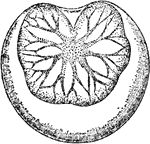
Noctiluca Scintillans
An illustration of the Noctiluca scintillans. Noctiluca scintillans, also published as Noctiluca miliaris,…

Lateral View of Noctiluca Scintillans
An illustration of the lateral view of the Noctiluca scintillans. Noctiluca scintillans, also published…

Power Cream Separator
A cream separator is device invented by Martin Wiberg to separate cream from milk (see also Gustaf de…

Female Nautilus without Shell
An illustration of a female nautilus without the shell. "m, The dorsal "hood" formed by the enlargement…

Sea Anemone
Edwardsia beautempsi is a species of sea anemone that lives freely in tubes in the sand, unattached.
!["Suppose we have a pipe A B laid in a horizontal position so that the centre line is exactly at the same level all along the pope, and differences of level may be neglected. Let water be delivered b this pipe at a steady from a reservoir provided with a constant supply which keeps the free surface level always the same. If the pipe A B is of uniform sectional area throughout, and is at all points offers a uniform frictional resistance to the flow of the water, the pressure will gradually become less at points along it more and more distanct from the reservoir. This is no lonfer the case when the pipe is larger at one place than another, as shown in the [figure]." (Britannica, 1891)](https://etc.usf.edu/clipart/61100/61153/61153_water-flow_mth.gif)
Water Flow in Pipes
"Suppose we have a pipe A B laid in a horizontal position so that the centre line is exactly at the…

Pith-Ball Electroscope
"An instrument for observing or detecting the existence of free electricity, and, in general, for determining…
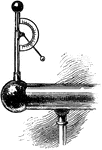
Quadrant Electroscope
"An instrument for observing or detecting the existence of free electricity, and, in general, for determining…

Condensing Electroscope
"An instrument for observing or detecting the existence of free electricity, and, in general, for determining…
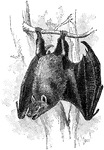
Egyptian Free-Tailed Bat
The Egyptian Free-Tailed Bat (Tadarida aegyptiaca) is a species of bat in the Molossidae family of free-tailed…
Cut-off Basin
Diagrammatic cross-section of a cut off basin, and the deposits formed in it after complete evaporation.

Medusa of a Hydroid
Colonial, plant-like animals closely related to jellyfish, with stinging cells, Any member of the invertebrate…
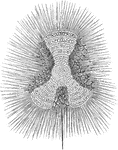
Euchitonia
"A pelagic family of radioflagellate infusorians, typified by the genus Euchitonia. The animalcules…
!["A pipe of this nature fitted with a piece of glass so as to exhibit the reed (which is a "free reed") is shown in [the illustration]. Q is the wind-chest of the bellows, into which P is fitted. In the right-hand figure the upper part of the pope is removed, so as to show the reed more clearly. A plate of metal c c, has a slit but in it, in which the tongue I may just past. By means of a curved wire, r, projecting above the top of the pipe, and the play of the tongue may be controlled and the pipe tuned. The conical pipe, H, placed at the top, serves to increase the power of the sound". -Benson, 1891](https://etc.usf.edu/clipart/62100/62146/62146_reed_mth.gif)
Reed
"A pipe of this nature fitted with a piece of glass so as to exhibit the reed (which is a "free reed")…

Euchone
Euchone elegans is a species of marine worms in the family, Terebellidae, sometimes known as spaghetti…
Dakota Artesian System
East-west section across South Dakota to show the Dakota artesian system. The Dakota sandstone is composed…
Alluvial Fan
Diagram showing the progressive overlapping of the successive divisions of an alluvial fan, away from…

Flood Plain of a River
Block diagram showing the flood-plain of a river, with ox-bows and marginal streams and in section,…
Formation of Kettle Holes
Diagrams to illustrate the mode of formation of kettle holes in glacial deposits.
Origin of Eskers
Diagrams showing the origins of eskers. A) A tunnel under the ice, nearly filled with sand and gravel…

Clastic Deposits in the Sea
Natural and columnar sections at each end and in the center of a line 100 miles long and extending at…
Offlaps Followed by Overlap
Section to illustrate the relationships of strata formed by a compound, transgressing, retreatal and…

Compound Offlapping and Overlapping Series
Natural and columnar section to illustrate compound offlapping and overlapping series.
Replacing Overlap
Diagrammatic section to illustrate replacing overlap of shore or continental sands on the right and…
Overlap of Continental Beds
Diagrammatic section to illustrate the overlap of continental beds over a retreatal marine series.
Various Types of Overlap Across New York State
East-west section across the state of New York, showing the various types of overlap characteristic…

Overlap from the Appalachians to Cincinnati
Restored section from the Appalachians to the Cincinnati region, to show the overlaps of continental…
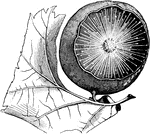
Oak Apple Gall
"Gall, or Oak-apple, produced by Cynips quercus-inanis, showing the internal cobwebby structure. Gall:…
Printers' Galley
"In printing, an oblong shallow tray of brass or wood, rarely of zinc, on which the compositor deposits…

Prisoner Drilling Hole
An illustration of a prisoner drilling a hole in the wall of his prison cell.
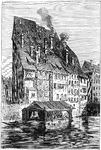
Ancient Houses in Strasburg
Strasburg, originally known as Strateburguen in the sixth century, on the first partition of the Frankish…
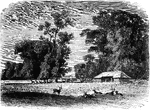
The Prater
The Wiener Prater is a large public park in Vienna's 2nd district Leopoldstadt. Prater is derived from…
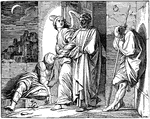
Peter Delivered from Prison by an Angel
"And, behold, the angel of the Lord came upon him, and a light shined in the prison: and he smote Peter…
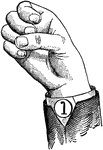
Normal Aperture Back Primary High Vowel
Vowels have a wide, firm, and free channel, whereby the breath is modified without friction or sibilation.…

Normal Aperture Back Primary Mid Vowel
Vowels have a wide, firm, and free channel, whereby the breath is modified without friction or sibilation.…

Normal Aperture Back Primary Low Vowel
Vowels have a wide, firm, and free channel, whereby the breath is modified without friction or sibilation.…

Normal Aperture Back Wide High Vowel
Vowels have a wide, firm, and free channel, whereby the breath is modified without friction or sibilation.…

Normal Aperture Back Wide Mid Vowel
Vowels have a wide, firm, and free channel, whereby the breath is modified without friction or sibilation.…

Normal Aperture Back Wide Low Vowel
Vowels have a wide, firm, and free channel, whereby the breath is modified without friction or sibilation.…
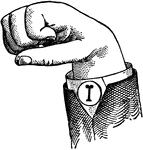
Normal Aperture Mixed Primary High Vowel
Vowels have a wide, firm, and free channel, whereby the breath is modified without friction or sibilation.…
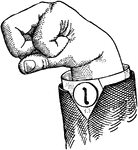
Normal Aperture Mixed Primary Mid Vowel
Vowels have a wide, firm, and free channel, whereby the breath is modified without friction or sibilation.…
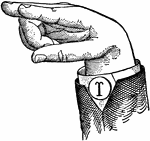
Normal Aperture Mixed Wide High Vowel
Vowels have a wide, firm, and free channel, whereby the breath is modified without friction or sibilation.…
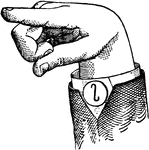
Normal Aperture Mixed Wide Mid Vowel
Vowels have a wide, firm, and free channel, whereby the breath is modified without friction or sibilation.…
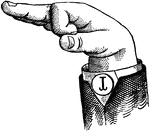
Normal Aperture Mixed Wide Low Vowel
Vowels have a wide, firm, and free channel, whereby the breath is modified without friction or sibilation.…

Normal Aperture Front Primary High Vowel
Vowels have a wide, firm, and free channel, whereby the breath is modified without friction or sibilation.…

Normal Aperture Front Primary Mid Vowel
Vowels have a wide, firm, and free channel, whereby the breath is modified without friction or sibilation.…

Normal Aperture Front Primary Low Vowel
Vowels have a wide, firm, and free channel, whereby the breath is modified without friction or sibilation.…

Normal Aperture Front Wide High Vowel
Vowels have a wide, firm, and free channel, whereby the breath is modified without friction or sibilation.…

Normal Aperture Front Primary Wide Vowel
Vowels have a wide, firm, and free channel, whereby the breath is modified without friction or sibilation.…
Normal Aperture Front Wide Low Vowel
Vowels have a wide, firm, and free channel, whereby the breath is modified without friction or sibilation.…
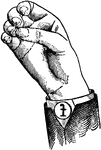
Round Back Primary High Vowel
Vowels have a wide, firm, and free channel, whereby the breath is modified without friction or sibilation.…
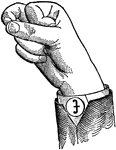
Round Back Primary Mid Vowel
Vowels have a wide, firm, and free channel, whereby the breath is modified without friction or sibilation.…

Round Back Primary Low Vowel
Vowels have a wide, firm, and free channel, whereby the breath is modified without friction or sibilation.…

Round Back Wide High Vowel
Vowels have a wide, firm, and free channel, whereby the breath is modified without friction or sibilation.…

Round Back Wide Mid Vowel
Vowels have a wide, firm, and free channel, whereby the breath is modified without friction or sibilation.…

Round Back Wide Low Vowel
Vowels have a wide, firm, and free channel, whereby the breath is modified without friction or sibilation.…
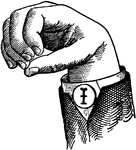
Round Mixed Primary High Vowel
Vowels have a wide, firm, and free channel, whereby the breath is modified without friction or sibilation.…
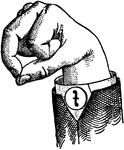
Round Mixed Primary Mid Vowel
Vowels have a wide, firm, and free channel, whereby the breath is modified without friction or sibilation.…
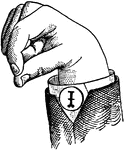
Round Mixed Primary Low Vowel
Vowels have a wide, firm, and free channel, whereby the breath is modified without friction or sibilation.…
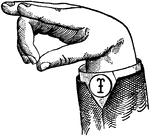
Round Mixed Wide High Vowel
Vowels have a wide, firm, and free channel, whereby the breath is modified without friction or sibilation.…